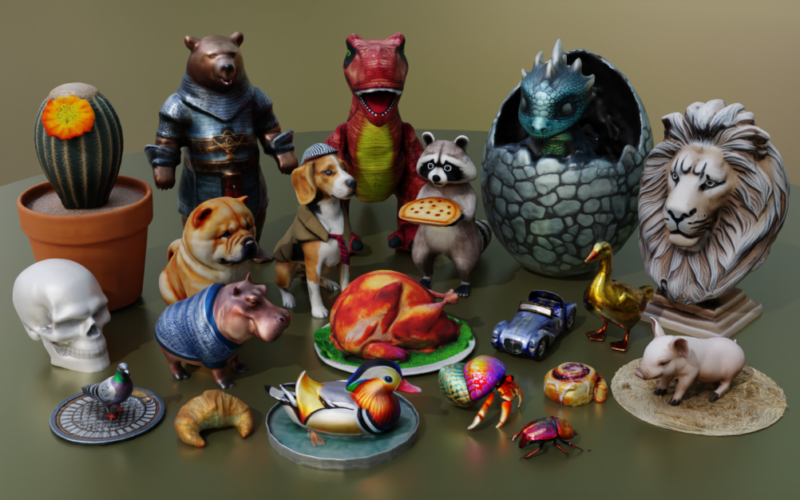Don’t miss OpenAI, Chevron, Nvidia, Kaiser Permanente, and Capital One leaders only at VentureBeat Transform 2024. Gain essential insights about GenAI and expand your network at this exclusive three day event. Learn More
Meta, the tech giant formerly known as Facebook, introduced Meta 3D Gen today, a new AI system that creates high-quality 3D assets from text descriptions in less than a minute. This development represents a significant advance in generative AI for 3D graphics, with the potential to transform industries from video game development to industrial design and architecture.
The new system combines two key components: Meta 3D AssetGen, which creates 3D meshes, and Meta 3D TextureGen, which generates textures. Working in concert, these technologies produce 3D assets with high-resolution textures and physically based rendering (PBR) materials. According to Meta, the process is three to 10 times faster than existing solutions.
“3DGen offers 3D asset creation with high prompt fidelity and high-quality 3D shapes and textures in under a minute,” the researchers explain in their paper. This speed and quality could streamline workflows across multiple industries, reducing production time and costs while enhancing creative possibilities.
Bridging AI and professional 3D workflows
One of Meta 3D Gen’s most significant features is its support for PBR materials, allowing for realistic relighting of generated 3D objects. This capability is crucial for integrating AI-generated assets into real-world applications and existing 3D pipelines.
Lil Snack & GamesBeat
GamesBeat is excited to partner with Lil Snack to have customized games just for our audience! We know as gamers ourselves, this is an exciting way to engage through play with the GamesBeat content you have already come to love. Start playing games now!
The integration of PBR materials represents a significant advancement in AI-generated 3D content. Traditional AI-generated 3D assets often struggle with realistic lighting and material properties, limiting their usefulness in professional workflows. By incorporating PBR, Meta 3D Gen allows generated assets to react realistically to different lighting conditions, making them far more versatile and applicable in various contexts, from video game environments to architectural visualizations.
This breakthrough could potentially bridge the longstanding gap between AI-generated content and professional 3D workflows. It enables seamless integration of AI-created assets into existing pipelines, potentially accelerating the creation of virtual environments and digital twins across various industries.

The system’s texture generation component, Meta 3D TextureGen, can create high-quality and globally consistent textures for complex 3D geometries in less than 20 seconds. It also includes a texture enhancement network capable of upscaling textures to 4K resolution, meeting the demands of high-end visual applications.
Reshaping industries and redefining creative processes
The implications of Meta 3D Gen extend far beyond Meta’s immediate sphere of influence. This technology has the potential to reshape numerous industries and create new opportunities for innovation in 3D content creation and visualization.
For the gaming industry, Meta 3D Gen could accelerate the development of expansive virtual worlds, allowing developers to rapidly prototype and iterate on environments and assets. In architecture and industrial design, the system could enable quick visualization of concepts, speeding up the design process and improving communication with clients.

The technology also has significant implications for the growing fields of augmented and virtual reality. By lowering the barriers to creating high-quality 3D assets, Meta 3D Gen could accelerate the development of immersive experiences for education, training, and entertainment.
However, the advent of this technology also raises questions about the future of 3D modeling as a profession. While Meta 3D Gen is likely to enhance the productivity of 3D artists, it may also reduce the demand for certain types of routine 3D asset creation. This shift could push professionals to focus more on creative direction and complex, custom work that AI still struggles to replicate.
As AI continues to reshape the landscape of digital content creation, Meta 3D Gen represents a significant milestone. Its ability to rapidly produce high-quality, versatile 3D assets from text prompts could open new avenues for creative expression in the digital realm, potentially democratizing 3D content creation and accelerating innovation across multiple industries.
Source link lol

